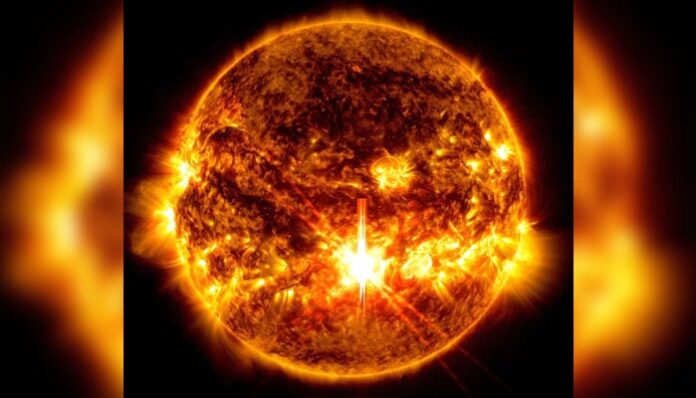A major solar storm is barreling its way towards the Earth for the second time in five months, the National Oceanic and Atmospheric Administration (NOAA) warned earlier this week.
Experts at the United States-based scientific and regulatory agency have warned that this solar storm will be a strong “G3-class geomagnetic storm” — the third most powerful category after the G4 and G5.
Geomagnetic storms are caused by explosions on the sun’s surface, such as solar flares, which can, in turn, send huge amounts of plasma shooting off into space, ultimately striking our planet’s atmosphere, Gizmodo reported.
According to NOAA’s Space Weather Prediction Center, the strong solar storm could hit Earth on Friday, likely impacting navigation systems, power grids and even satellite communications.
However, on the bright side, it could bring back those spectacular auroras many witnessed earlier this year.
The NOAA’s warning comes after a strong solar explosion occurred on Tuesday, when the second most powerful solar flare in the past few years erupted.
The flare originated from an area of the sun known for its numerous sunspots, called Active Region 3842, and, according to NOAA, was rated an X7.1.
Flares are rated by their severity, with b-class flares being the weakest and x-class being the strongest. Each letter marks a 10-fold increase in power over the one lower on the scale, which means an X7.1 is quite powerful.
In fact, it was the second most powerful of the current solar cycle.
Previously, NOAA cautioned that a solar flare could result in a coronal mass ejection (CME), expelling solar particles towards Earth.
The severity will be “dependent upon the orientation of the embedded magnetic field,” according to the alert.
While the storm will not have a direct effect on humans, the big risks are to sensitive electrical systems, such as power grids and satellites.
Still, NOAA said that the threat should be “mostly mitigatable.”
However, CMEs can result in bright auroras, giving people on Earth a front seat to see natural light shows.
NOAA said these bright auroras may be visible over many of the northern US states, the lower Midwest, and even as far as Oregon.






















